Designed in the late 1960s by Hungarian Brutalist architect Ernő Goldfinger, and completed in 1972 as the balloon of high-rise living had already burst under the pressure of crime and poverty; west London’s Trellick Tower — Grade II* listed in 1998 — should be well within its rights to copyright the word ‘looming’.
Seen by many as a symbol of degradation (by the end of the ’70s, the Trellick had been dubbed “The Tower of Terror”), Brutalist architecture and the Modernist movement that Le Corbusier had pioneered — along with the utopian dream of Urbanism — have found cult status, uncompromising concrete behemoths ageing better than their critics could have predicted. True, Trellick Tower is still resolutely unflinching in its looks. Goldfinger’s 322 ft apartment block looms large over its neighbourhood and beyond — but with its slim profile; its bridged walkways; exposed corridors and infamous outline, there are few buildings in the capital more affecting than North Kensington’s uncomfortable beauty.
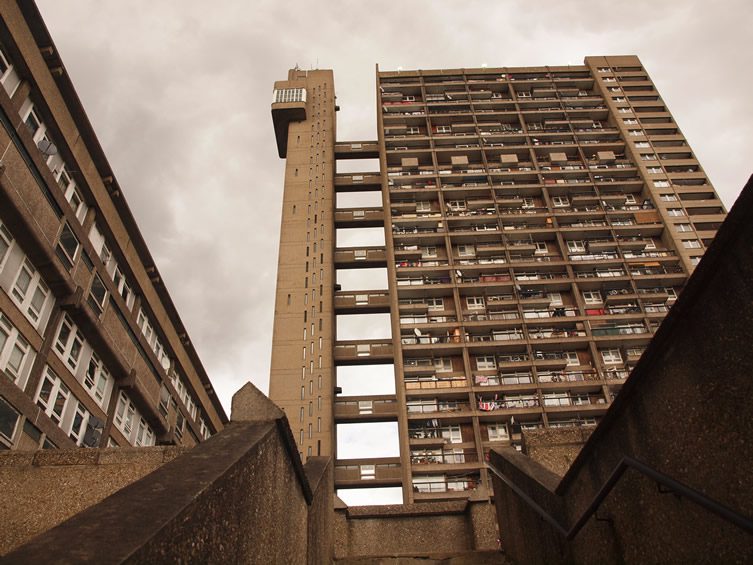
Photo © SomeDriftwood
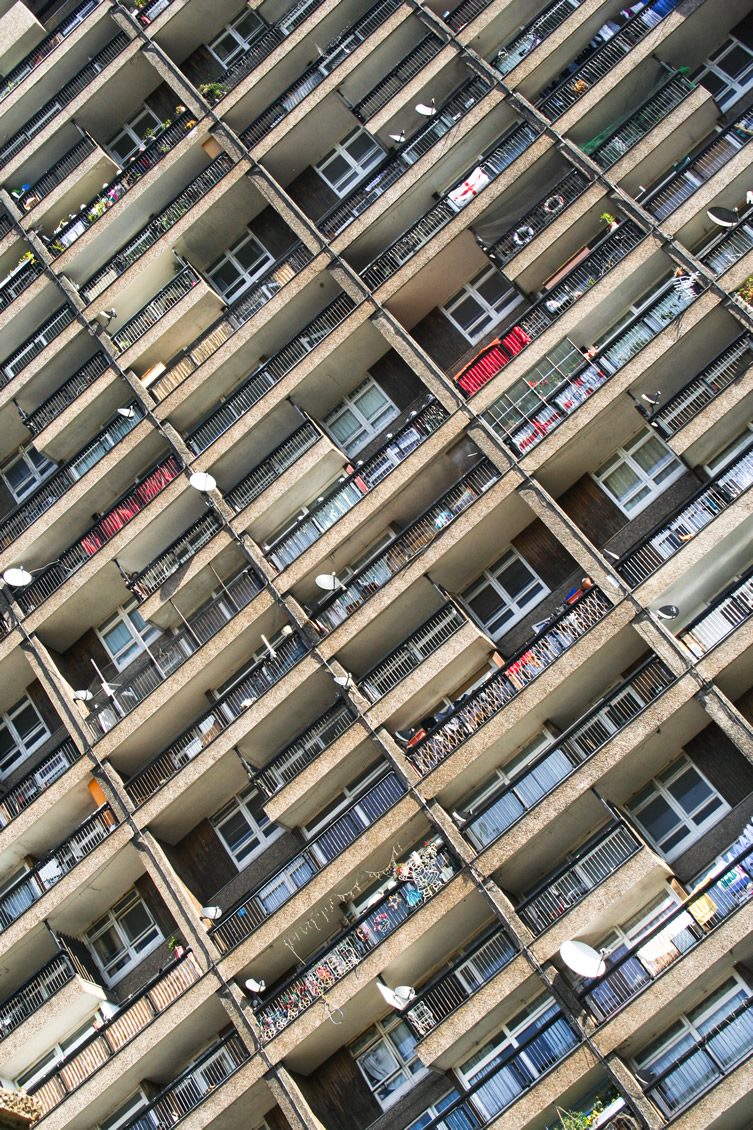
Photo © Ricky Thakrar
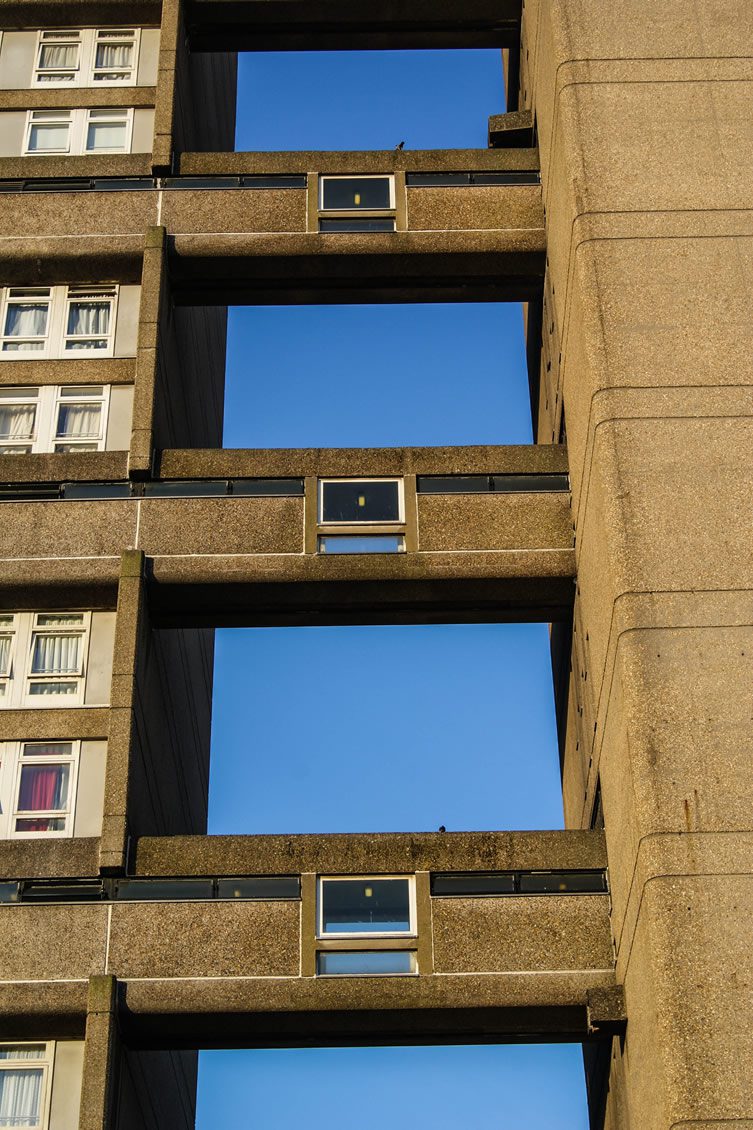
Photo © Jonathan Brown
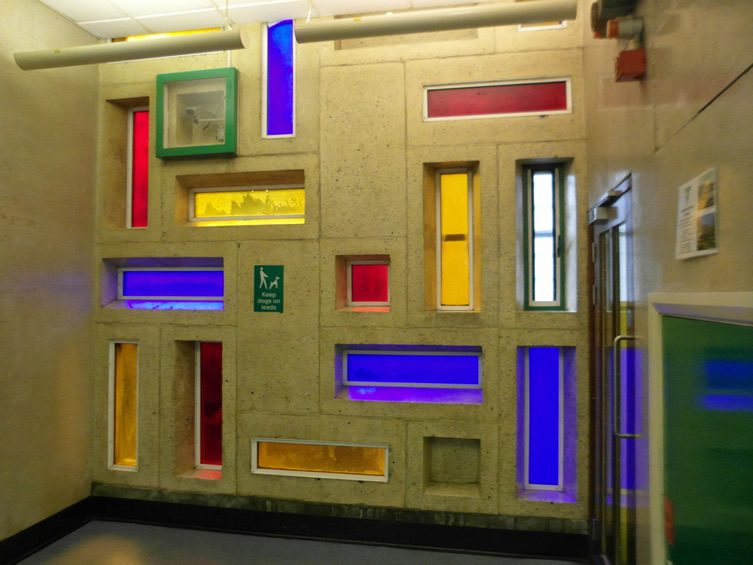
Photo © diamond geezer
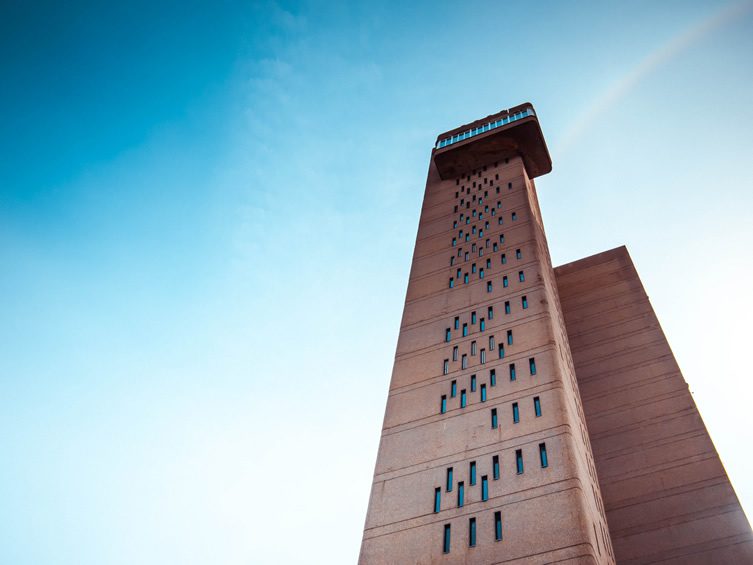
Photo © Laura McGregor
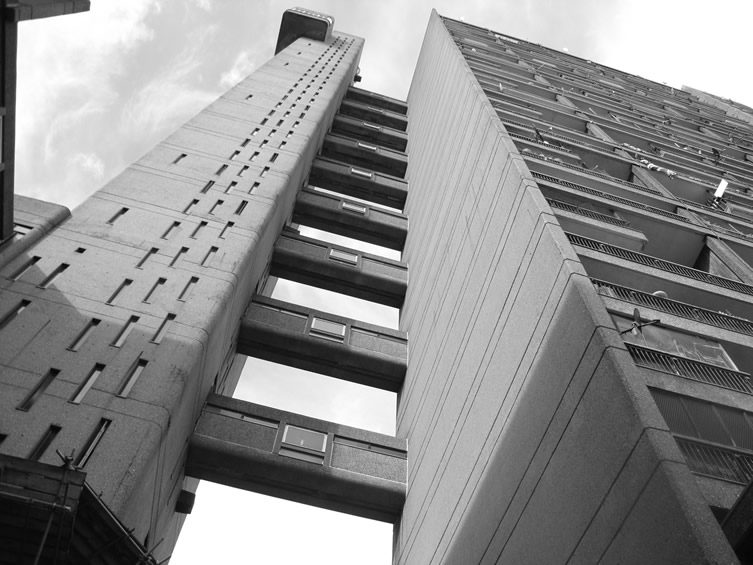
Photo © Alex Donohue
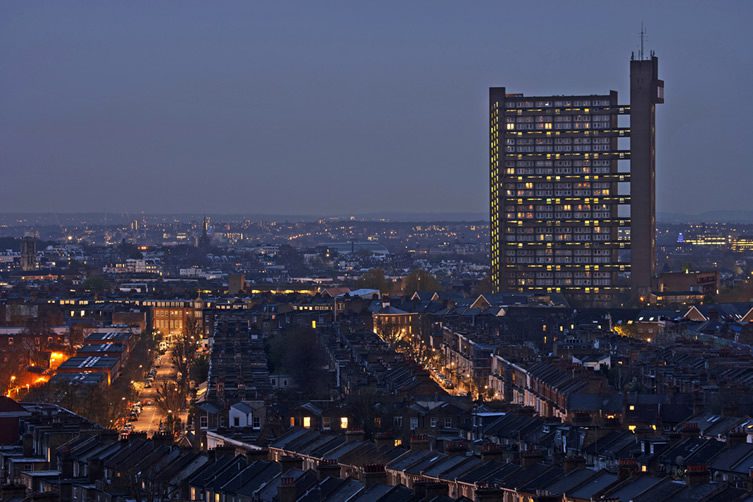
Photo © James Burns








